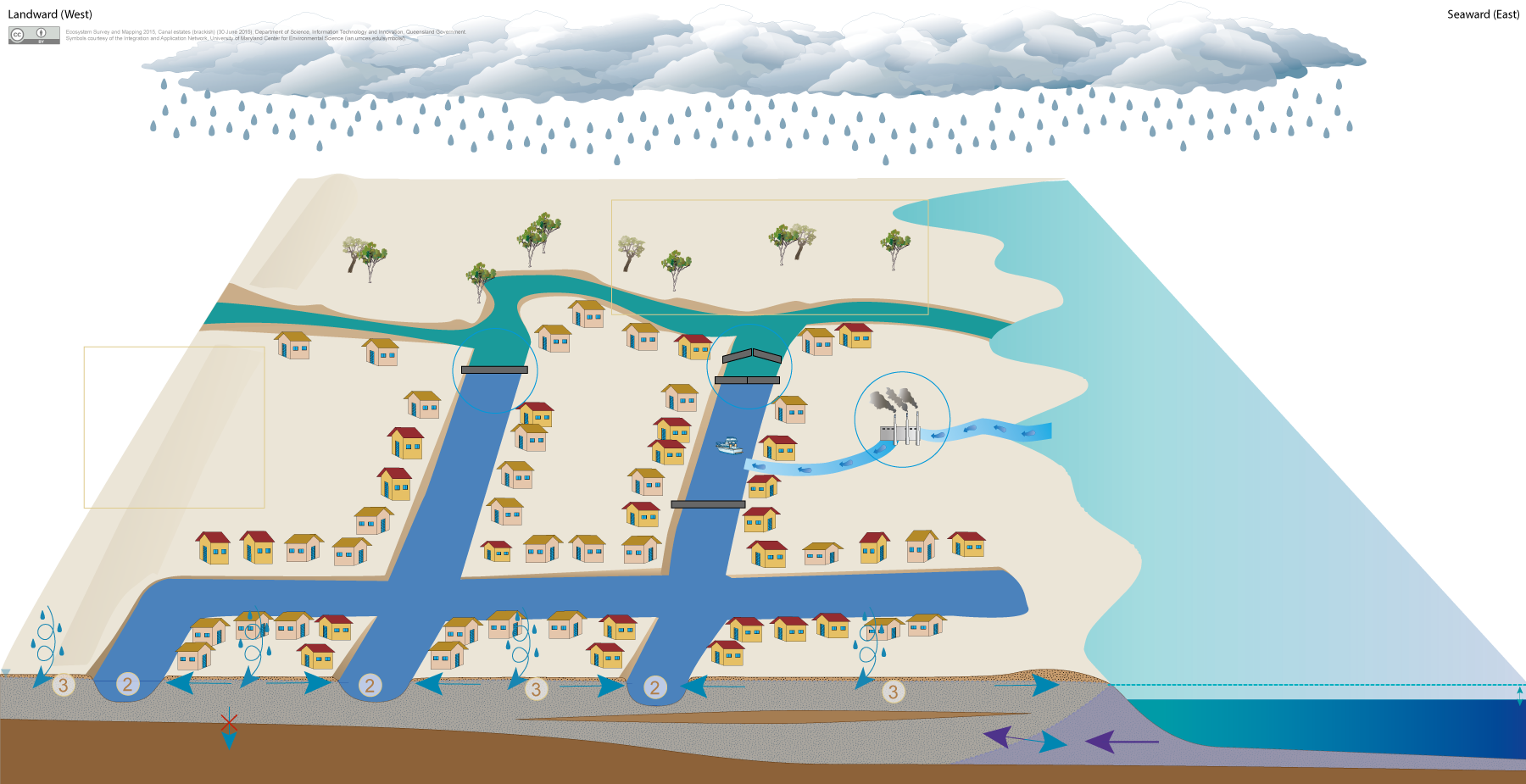|
|
Canal estates (brackish)Canal estates (brackish)
Click on elements of the model or select from the tabs below Brackish canal estates are man-made canals with locks or weirs that restrict connection to estuaries and therefore have limited tidal influence. The canals are usually dug into unconsolidated sedimentary aquifers including coastal sand masses (see coastal sand masses – beach ridges) or alluvia deposited during periods of higher sea level by fluvial processes in current river channels, floodplains, estuaries, deltas and other near-shore environments (see low-lying coastal swamps). These unconsolidated sedimentary aquifers store and transmit groundwater through inter-granular voids between gravel and sand particles. Groundwater within the unconsolidated sedimentary aquifers is predominantly fresh and may discharge into the canal. To prevent stagnation of water within the canal, marine water may be allowed to leak through the locks or in some cases is actively pumped into the canal resulting in brackish waters. These areas may support flora and fauna communities, ecological processes and delivery of ecosystem services.
Pictorial conceptual model PDF Additional links
Last updated: 18 December 2015 This page should be cited as: Queensland Government, Queensland (2015) Canal estates (brackish), WetlandInfo website, accessed 18 March 2024. Available at: https://wetlandinfo.des.qld.gov.au/wetlands/ecology/aquatic-ecosystems-natural/groundwater-dependent/canal-estates-brackish/ |

 — Department of Environment, Science and Innovation
— Department of Environment, Science and Innovation

